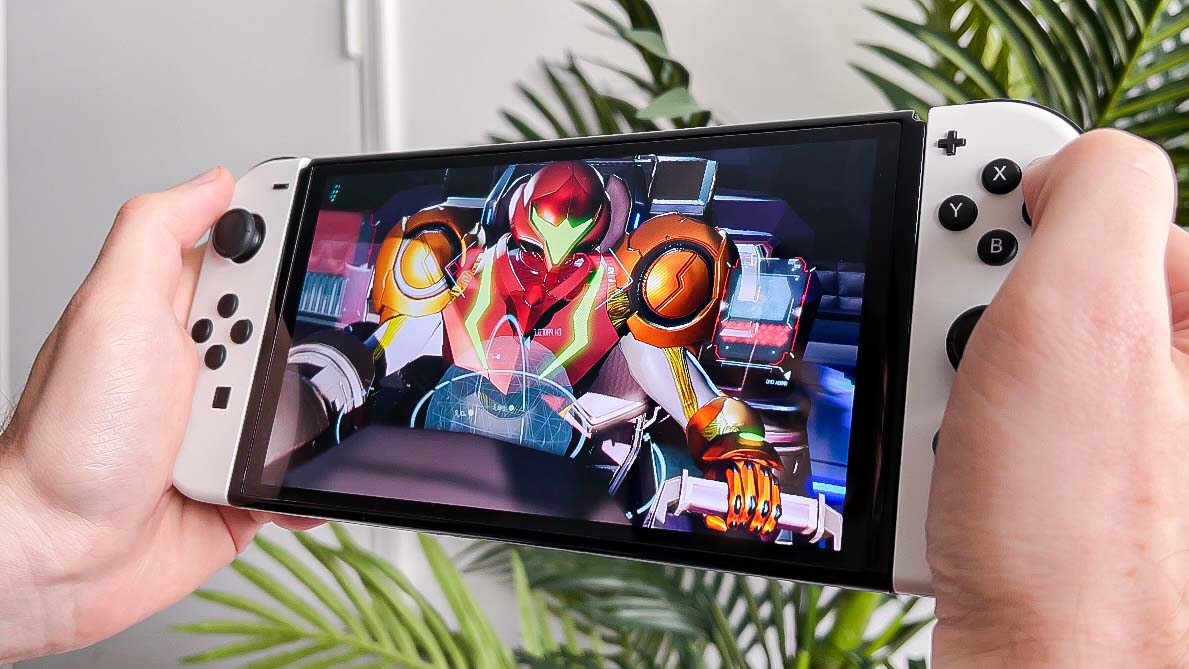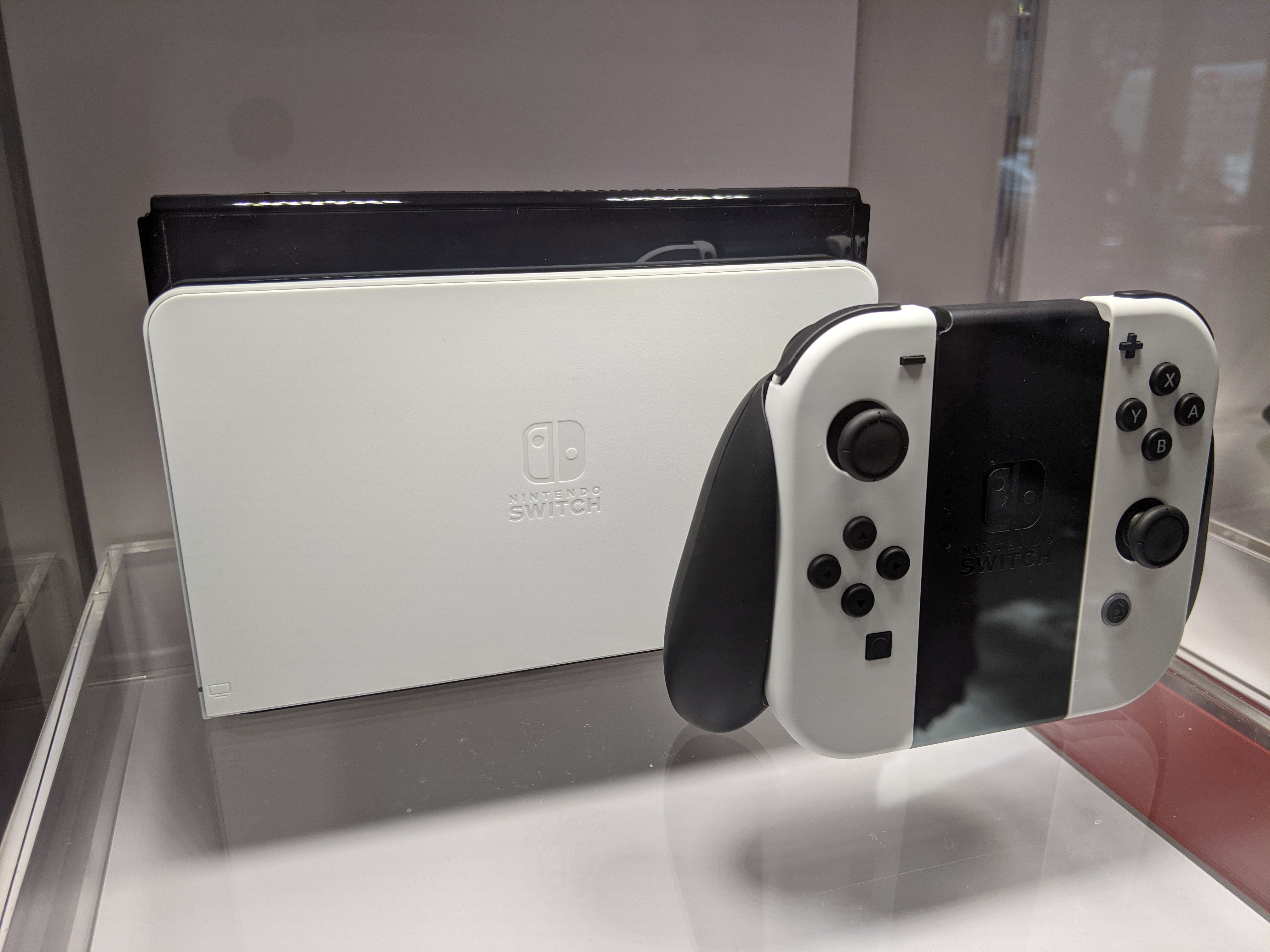The Nintendo Switch OLED is already a hit — so why are analysts worried?
The Nintendo Switch OLED may be courting a niche audience

The Nintendo Switch OLED is finally out, but you may have some trouble finding one. Pre-orders for the Switch OLED sold out a few weeks after its announcement back in July, and now may people are scrambling to find where to buy the Switch OLED.
Our Nintendo Switch OLED review is largely positive, and a casual glance at social media shows that fans are pretty excited, too. It seems like the Nintendo Switch OLED is a big success, right out of the gate.
Of course, there are multiple ways to define success. The Switch OLED could sell like hotcakes, but still leave some customers feeling disappointed. According to some gaming analysts, that's actually a distinct possibility.
- Play the best Nintendo Switch games
- Learn where to buy the Nintendo Switch online
- Plus: Battlefield 2042 beta is promising but has more bugs than the Australian outback
Someday, we’ll be able to look back on the Switch OLED’s sales figures, critical reception and buyer response, and get a pretty good idea of how the system fared overall. Until then, we’ve analyzed some data and asked some experts to help us gauge how the Switch OLED might do once it’s out in the wild.
Nintendo Switch OLED: Running the numbers

First, a few background facts about the Nintendo Switch: It launched on March 3, 2017, and has sold 89 million units worldwide since then. That makes it Nintendo’s fastest-selling console, and its second-most popular home console, just 10 million units shy of the Wii. Nintendo has sold, on average, more than 56,000 Switches every day since launch.
The new Switch OLED's feature enhancements over original Switch hardware are minimal and do not provide a compelling reason for existing users to upgrade en masse.
Matthew Bailey, Omdia
The gaming public’s appetite for Switch consoles has not yet abated, either. As recently as last Christmas, they were almost impossible to find for weeks at a time.
The Switch OLED is the second major Switch variant, following the handheld-only Switch Lite in 2019. (The base Switch model also had a slight battery refresh in 2019, but that’s not enough to consider it a separate version of the console.) Rather than a full system redesign, the Switch OLED is nearly identical to the base Switch, save for a better screen, a better kickstand, better speakers and an integrated Ethernet port in the dock. If you already own a Switch, you don’t have to run right out and upgrade, but if you don’t, the OLED is the model to get.
Sign up to get the BEST of Tom's Guide direct to your inbox.
Get instant access to breaking news, the hottest reviews, great deals and helpful tips.
“The biggest advantage the Nintendo Switch has over other consoles is that it's portable,” the team of analysts at Newzoo told Tom’s Guide. Newzoo is an Amsterdam-based gaming analytics company, which provides data and consulting services to game developers and related businesses. “The Switch OLED leans into that advantage by adding features that support high-fidelity games on the go.”
For the Switch OLED to be successful, it has to do (at least) one of three things: sell a lot of units, please critics and delight fans. The professional reviews on the Switch OLED are already in, and they’re positive, for the most part. But tech reviewers are also a tiny fraction of potential Switch OLED owners. The real challenge is still ahead.
To that end, I asked Newzoo what kind of customers might want the Switch OLED. After all, Nintendo wouldn’t design the console without an audience in mind for it.
Who is the Switch OLED for?
“The addition of a LAN port on the dock is interesting because it suggests that the Switch OLED is targeting mid and hardcore gamers to an extent,” the analysts said. “This will be a welcome addition for fans of online multiplayer titles.”
At the same time, the Switch OLED is a more expensive version of a console that’s already sold almost 90 million units. There’s a good chance that most people who want a Switch already have one, and don’t need a second — or third — console.
“While some Switch owners will upgrade their consoles to the more premium version, it is unlikely to surpass lifetime sales of the original model,” the Newzoo team told us.
Matthew Bailey, principal analyst at London-based tech analytics firm Omdia, had similar thoughts:
"We don't expect the Nintendo Switch OLED model to have a significant impact on the market, nor Nintendo's overall trajectory," he told Tom's Guide. "The new [model's] feature enhancements over original Switch hardware are minimal and do not provide a compelling reason for existing users to upgrade en masse.
"Although Omdia expects some dedicated Nintendo fans to pick up the new model at launch, sales will mostly cannibalize new sales of the existing models, rather than drive mass levels of upgrade activity among existing Switch owners."
Switch OLED limitations

Generally speaking, the analysts we spoke to don't believe the Switch OLED was going to shake up the gaming world, especially four years into the console’s lifespan. There are three primary reasons for this: Nintendo’s difficulties in the Chinese market, and the general sense that gamers were hoping for a more substantial upgrade.
As the OLED model does not have major upgrades to its hardware (beyond the screen), some fans are disappointed
Newzoo
While Switch sales in China may not have a direct bearing on whether the Switch OLED will succeed, it’s still an example of how a premium console may be a tough sell in a world that wants cheaper and cheaper gaming experiences.
“The importance of the Chinese market is growing for Nintendo,” the analysts said. “Previously the hardware was only available on the grey market by importing from Hong Kong or Japan, but became available through retail channels after Tencent was granted the exclusive rights to launch the hardware in the Chinese market.
“The Switch reportedly sold over one million units (excluding the grey market) in China as of January 2021 leaving room for future growth. However, the limited number of software releases (due to regulations) and relatively high upfront price for the hardware, even more of a barrier for the higher-priced OLED model, will slow down growth.”
The Switch OLED has one other potential stumbling block, and it’s the same one that both fans and critics have been pointing out ever since Nintendo first announced the device. At its core, the Switch OLED is still a four-year-old console that can’t provide the same level of performance as a PS5, Xbox Series X or gaming PC.
“As the OLED model does not have major upgrades to its hardware (beyond the screen), some fans are disappointed by the new model,” the Newzoo team told us. “Gamers looking to have the same quality experience as the Xbox Series X/S or PlayStation 5 on-the-go will not be satisfied by the upgraded model. Instead of upgrading internal hardware, Nintendo is relying more on cloud gaming to deliver the latest processing-intensive titles to the Switch.”
We can already see the Switch’s embrace of cloud gaming in action. A few days ago, Nintendo announced the Kingdom Hearts series will be coming to Switch, but only in cloud-gaming form. It’s difficult to square the Switch’s portable nature with the powerful broadband connections that cloud gaming requires, even if you have a gorgeous OLED screen and a better kickstand.
Switch OLED outlook
Regardless of what happens with the Switch OLED, analysts expect the Switch family in general to continue selling well — although perhaps not as well as it has in the past.
"We expect Nintendo to sell just under 24 million Switch units on a global basis in 2021, which is a decline compared to 2020," Bailey said. Pandemic-related lockdowns created an unusually high demand for the hybrid console, he argued, which declined in 2021.
"Even so," he continued, "Switch sales volumes in 2021 will remain more than 25% above pre-COVID levels, and Switch OLED will account for a decent amount of Nintendo's hardware sales."
As for whether fans will embrace the Switch OLED, we’ll have to wait at least a few weeks and see. Nintendo has been admirably up-front about what the Switch OLED is, and isn’t. But if fans are really holding out for a significant Switch upgrade, the Switch OLED isn’t what they were waiting for. A hypothetical “Switch Pro” might be more to their tastes — if it ever comes out.
Marshall Honorof is a senior editor for Tom's Guide, overseeing the site's coverage of gaming hardware and software. He comes from a science writing background, having studied paleomammalogy, biological anthropology, and the history of science and technology. After hours, you can find him practicing taekwondo or doing deep dives on classic sci-fi.

